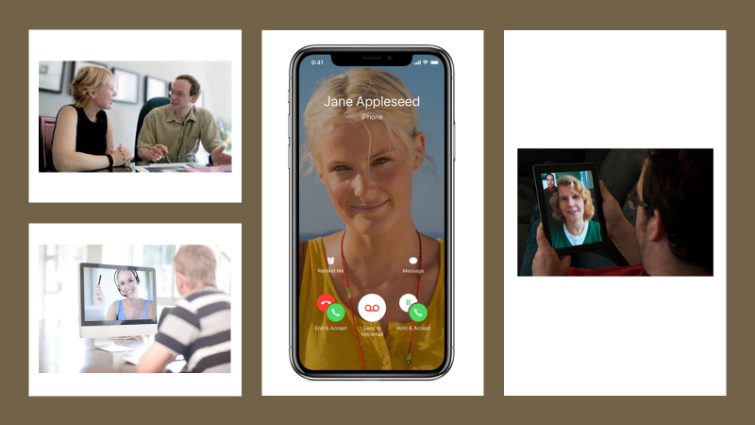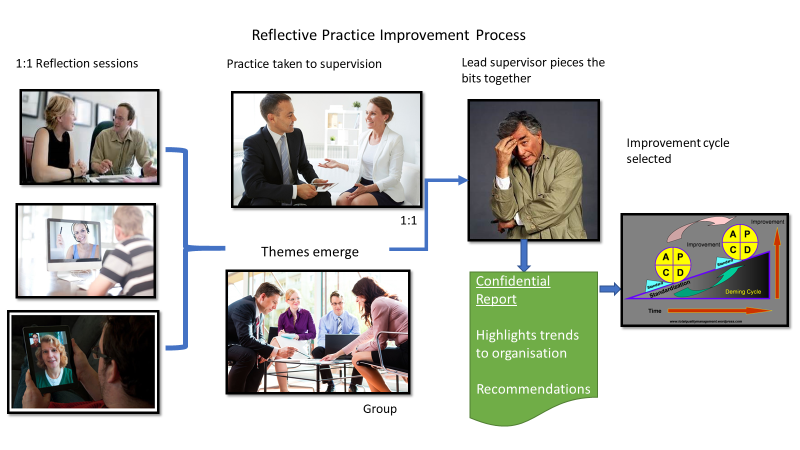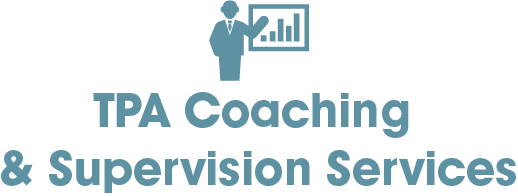The time for 2020 vision is here and now!!
- by Tim Anderson
- •
- 28 Nov, 2019
- •
Leadership for 2020 and how Reflective practice can help your executives move toward excellence.

Working as a coach and as a consultant I have been quite amused by the number of organisations that have used “Vision 2020” as a title when launching new strategic initiatives. As we fast approach the end of the decade and reach 2020 I wonder what organisations have achieved in terms of supporting their teams and leaders to deliver on their “2020 visions”?
The time for 2020 vision is fast approaching and is accompanied by challenges such as:
· 87% Of employees worldwide are not engaged with their work (Gallup 2016)
· Leaders are increasingly required to support staff in complex and multicultural environments.
· Senior executives are managing teams that are often working remotely and across time zones.
· Many are managing teams where they do not have direct authority.
· Dispersed workforce's are having to be managed within the lens of cost reduction and reducing the organisations carbon footprint.
· Compliance continues to be a challenge where legislation is produced locally, causing duplication of cost across nations and borders.
· Where the influence of technology is enabling personal values of different culture and generations across the globe to consider life with a different and fresher mindset.
· Where ease of communication and connectivity has invigorated topics such as personal health, well-being and the sustainability of our planet.
· And where wealth creation and imbalance regarding the distribution of such wealth is now far wider than 20 years ago and yet technology continues to make the world smaller and as such leads to tension and dissatisfaction.
So, what is the role of the 21st Century leader? Certainly, the modern leader is no longer required to be the knight on the white charger, fixing all in front of them, but perhaps now is required to be the facilitator of change.
When considering the past, present and the future we need to ask:
How well did we prepare managers and leaders to work in such a VUCA world where change is the norm?
What support mechanisms are delivering the outcomes we NEED to see today?
What initiatives and development methods will support our leaders in contributing to the success of our respective organisations in the future to help meet such challenges?
As we approach a new decade, it might be a great time to stop, reflect and consider what organisations need from their leaders and senior executives.
I offer for consideration EXECUTIVE REFLECTION (ER) Executive
Executive Reflection (ER) as an executive tool to enable enhanced performance, this may be done in isolation or by being supported by engaging with a reflective partner.
Building on the process, ER Supervision to support the culture of ER and to bring together the unconnected pieces that arise from reflection that complete the organisational puzzle toward achieving enhanced innovation, quality and performance.
The case for Executive Reflection
The complexities listed in the introduction of this blog highlight some of the challenges for busy leaders in our organisations. According to an article from the Boston Consulting Group ( https://www.48hoursunplug.com/new-blog/2017/8/30/the-rewards-of-ceo-reflection-boston-consulting-group-article) one leader had received some 1,000 pieces of advice during her early days as the chief executive. Many leaders are under constant pressure to perform, live in a 24-7 spotlight of social-media attention, and swim in a deep pool of information. Deep thought and reflection are casualties of this high-pressure and high-stakes environment as CEO and senior executives rush from event to event and decision to decision. Downtime is often regarded as wasted time.
However, according to research from the same article, “CEOs who do make time to reflect say that it is time well spent. Reflection leads to better insights into innovation, strategy, and execution. Reflection gives rise to better outcomes and higher credibility with corporate boards, leadership teams, workforce, and other stakeholders.”
In reflective thought, a person examines underlying assumptions, core beliefs, and knowledge. Unlike critical thought, which is aimed at solving a problem and achieving a specific outcome, reflective thought enhances the framing of problems, the search for meaning, and pattern recognition.
And according to Mary Helen Immordino-Yang, an associate professor of education, psychology, and neuroscience at the University of Southern California, reflective thinking engages the medial prefrontal cortex, the part of the brain involved in self-referential mental activities. At rest, this region exhibits the highest metabolic activity and during goal-oriented thinking, lower levels of activity. In other words, reflective thinking and critical thinking exist at opposite ends of a digital switch. When one is “on,” the other is “off.”
Executives should engage in both types of thinking. As complexity rises and the pace of change accelerates, executives need to engage in critical thinking to solve immediate challenges and in reflective thinking to clarify the big picture and imagine untapped opportunities.
Reflective practice can be carried out in isolation and form part of an executive’s regular work pattern. According to the BCG, reflection should be awarded both a structure and a schedule to ensure the process does not just extend into worrying about the immediate problems and challenges right in front of you today. A schedule ensures the discipline is developed and becomes regular and is set in tablets of stone within the executive’s diary.
There is a case for using a “reflective partner” to help challenge and stretch the reflection and this might be provided from a trusted partner who is from outside the organisation. This offers a safe space where the executive can have an open and honest dialogue and take feedback from someone with a wider perspective than those from just within the executive’s own organisation. A “reflective partner” will also help the executive to hold themselves to account on actions and commitments that come from the sessions.
The “reflective partner” would work under guidelines of confidentiality and not share detail of the intervention however, where the “reflective partner” provides support to various executives from the organisation it is inevitable that patterns and themes emerge that might be of value to share with the organisation but without invading the privacy and trust that has developed whilst in service of their client. This is where a structure of “supervision” can accommodate the observation and sharing of recurring trends and themes without directly impeding the executive and “reflective partners” intimacy.
The case for Supervision of Executive reflection.
What is Supervision?
“Supervision is a joint endeavour in which a practitioner, with the help of a supervisor, attends to their clients, themselves as part of their client practitioner relationships and the wider system context, and by so doing improves the quality of their work, transforms their client relationships, continuously develops themselves, their practice and their wider profession.”
(Hawkins & Smith: 2013, p.169)
By providing a supervisory tier to the reflective practice, an organisation can begin to place a framework of quality assurance around the executive’s reflection process. It provides an element of good practice for the “reflective partners” to operate by and enables the ethical and confidentiality challenges to be performed to an agreed standard. It supports consistency across the organisation of reflective practice.
In addition, what I have noticed when I have supervised groups of coaches and reflective partners from within an organisation is that themes and patterns begin to emerge which might not be obvious when dealing with a client challenge on a 1:1 basis.
The nature of reflection cuts across departments and divisions, and often a reflective partner is supporting executives from different areas both functionally and geographically. Themes and patterns emerge that might not look so obvious in isolation however from a wider, systemic lens, they might begin to provide evidence that hitherto had gone unnoticed or perhaps had been viewed as an isolated incident. By sharing the theme, the opportunity for improvement can be filtered back to the organisation for consideration with other topics that are up for debate.
In one organisation I worked with we noticed a distinct difference in line manager communication ability between one region to another. This provided an opportunity for each community to learn from each other and consider a consistent approach that would serve the organisation better going forward.
In another organisation we discovered an inconsistency with client on-boarding and induction of staff. Once again, an internal exercise of mirroring enabled induction to be amended and led to an improvement in time to get new team members up to speed and therefore increasing the speed to full productivity.
Supervision can help the individual executive and the senior leadership team consider challenges being faced by the organisation from a wider vantage point and can support the identification and implementation of improved professional practice that meets stakeholder needs.
Methods
Reflection can be an isolated activity but when supported by a reflective partner it can take place face to face or remotely via internet connection. The use of the web enables support to be carried out more conveniently and I have been able to support executives from around the globe and at times convenient to the executive. It enables reflective practice to be used throughout the organisation rather than being the privilege of the senior executives.

With supervision this too can be carried out over the web and provide a convenient way to extend this to group supervision, this will speed up the identification of trends and themes that can help improve organisational performance.

Reflective Practice Improvement Process
Reflection sessions take place, either face to face or over the
internet, the reflective partner takes themes and items for support to a
supervisor either 1:1 or in groups ( could be face to face or on-line) the lead
supervisor pieces together the recurring and interesting threads and reports
these back to the organisations senior leadership (possibly head of learning
and development) who then decides which areas might be useful for the
organisation to address.

Themes that emerge are current and can quickly be identified for actions toward improvement.
Delivering Improvements
Some of the areas I have seen improved as a result of reflective practice include:
· Building Executive Presence for leaders and mid-level executives.
· Enhanced communication skills of senior leaders and managers.
· Greater confidence and improved performance
· Increased understanding of self and more developed emotional self-management
· A more rounded leadership style
· Greater influence and improved relationships
· Increased flexibility and enhanced resilience
· Reduced stress and improved well being.
· Increased alignment of corporate objectives and strategy
· An increase in team engagement and inclusivity.
Conclusion.
The ability to build leaders that can support the organisation and those working within the organisations to navigate in an ever changing and more complex environment is vital for the success of the organisations we represent.
Our executives require the ability to have leadership skills that are fit for purpose that allow for great relationships, and be able to influence and motivate people, this is fundamental to leadership success.
Leaders need to be exceptional at influencing, developing interpersonal relationships, generating trust and creating strong and meaningful dialogue.
Whether they are selling new ideas at the leadership table, communicating bad news to the team or engaging stakeholders in difficult decisions, leaders need to be sensitive, flexible, confident, courageous and highly persuasive.
They need executive presence.
Working across a range of contexts – one-to-one or one-to-many, face-to-face, digital or the written word – a leader’s communications must have impact and achieve the desired outcomes.
So, if you want you leaders and executives to:
· Find a confident, authoritative voice
· Develop emotionally intelligent responses to the most challenging situations
· Learn tools to manage complex relationships with multiple stakeholders
· Discover the secrets of using language to achieve results
· Create a more flexible approach to influencing
· Make dynamic, powerful presentations
· Develop an engaging and impactful style of communicating
· Creating a confidential and supportive space in which to pause and reflect
· Facilitate the exploration of patterns, themes and blind spots
· Uncover blockages and challenges to new approaches or behaviours
· Elicit resourcefulness, purpose and drive
· Challenge thinking and gain new perspectives
· Identify areas for personal and professional development for your executives and senior leaders.
Then reflective practice maybe a significant step to take for your organisations.
References:
Hawkins & Smith (2013) Coaching, Mentoring and Organisational Consulting, Supervision, Skills & Development; (Ed2). Open University Press

In these challenging times I would like to share some thoughts with you why being people focused will have longer term benefits once we move out of lock down and toward more favourable times.
The term of the month seems to be furlough and I understand the need for businesses of all shapes and sizes to take whatever steps they need to take in order to survive however we would urge all organisations that have needed to take these measures not to fall into the trap of “out of sight out of mind”.
Never before have we had an opportunity as business owners and organisational leaders and managers to show that our people focused cultures are indeed what we do and how we act. I wonder how we might meet this challenge.
Taken from an excellent guide from the Chartered Institute of Personnel and Development ( CIPD) to an explanation on the rules and regulations around furloughed workers here we can provide a brief explanation furloughed working regulations.

I wanted to share a coaching session I provided to a client recently who brought to their coaching session a topic on how to support them in an up and coming bi-annual performance review. It was an interesting use of a coaching session and it got me thinking, why do we still carry out performance and staff reviews in methods created in the last century?
Employees the world over have been subject to the annual appraisal for as long as I can remember, I think I attended my first one back in the late 1970’s, I am not sure they have moved on much since then!
Back to my coaching session though. The coachee had suggested we look at areas such as how she could communicate a rich and powerful story that could describe many of the great things she had achieved since her last review and which were not captured by the standard KPI’s that everyone was measured against in the organisation. She wanted to include feedback on the things she had done since she had been promoted late last year, so her manager was aware of her growth. And she wanted to widen the theme, so the conversation did not major on merely what she had done this past month or so.
My client wanted to explore with me how to make less visible things visible; she wanted to include items such as being a team player, being seen as trustworthy by her staff, showing up to work with the best version of herself on offer and how this delivered on her being considerate and respectful of the team members. What she was eluding to was how to get the strengths in soft skills onto the agenda?
All too often the agenda that is set for the review is to meet the needs of the manager and that of the organisation, ticking off an event in the calendar and ensuring that key business drivers are being met. This is fair but also one sided and whilst it might support short term deliverables the business needs, it does not address the team members own career aspirations very well, neither does it address some of the harder challenges facing many organisations today in terms of recruiting, retaining and developing their workforce for the 21st Century challenges they face.
Two or three other areas we considered exploring were around the review process itself and how we might be able to keep key things top of mind continuously and not just at review time. How best to do this?
We considered the difference between performance reviews and development reviews? How can the attendee ensure both performance (an historic measure) and developmental conversations (taking a future perspective) take place within the meeting? We considered how to raise awareness of how the softer challenges were important in terms of reaching the organisational goals.
I was impressed with the approach my coachee had taken to preparing for the forthcoming meeting and that she had considered bringing this topic to coaching, she also mentioned how she had talked with her peers which in turn had added to the depth of information she was using to be able to best plan and approach the meeting. Clearly there was some deep thought from my client around how best to take advantage of the forth coming review. She acknowledged and accepted that the three key areas her company measured would need to be addressed but she wanted this to be a two-way process.
On reflection of the session I considered several things, firstly I wonder how well her manager was preparing for this meeting? I have had several coaching sessions with senior managers who have shared with me that whilst they always intend to approach the annual reviews with a greater level of planning, by the time review season hits, other dynamics have taken preference to the allocated planning time and so they end up with more of the same as last year.
I also considered the power of regular reviews; these are opportunities to learn and plan for both the manager and their employees. I am reminded of Bernard Marr description of why we measure from his fantastic book Managing and Delivering Performance ( p141) where he suggests we measure for three reasons, firstly because we do not trust our team will perform ( pretty negative), secondly because we have to (compliance) or thirdly, because we want to provide rich information that can help us improve. Of course, we all aspire to the third of Marr’s reasons, but I wonder how well we manage the review process as managers and how rich and varied is the quality of the data we use when carrying out such reviews?
It occurred to me too that most organisations offer reviews as a type of snapshot. There is nothing wrong with this in theory, and an annual review is better than no review at all. I noticed my client’s company were carrying out reviews twice a year and I know other organisations where I coach that do so each quarter. Each organisation uses a variety of tools to collect data that can be used during the review such as 360% surveys, performance impact data on internal and external customer satisfaction, team retention. But generally, this data is also provided as a snapshot. And yet, with the advances in technology and data integration it must be feasible to provide accurate and up to date information that each employee can use on a weekly or daily basis to help identify improvement areas. By providing up to date and regular data to our teams we can ensure the performance reviews are not the dominant process, or worse, continue to be the only way we support our employees. By providing data that our teams have regular access to, the employee can take ownership of their own development as part of their regular routine.
With the frightening statistic that 87% of employees worldwide are not engaged at work (Gallup 16) and considering that 50% of all millennials in the workplace are asking for more feedback and further, where many of the workforce in 2020 are working remotely and often with more flexibility with working hours, I wonder what your organisation is doing to support your workforce and helping them to feel included, invested in, ensuring they feel part of the future plans of the organisation and, most importantly, supported in being the best they possibly can within their respective roles?
I am interested to hear from you on processes your organisation is adopting to meet these people challenges, and what technology are you using, or considering using, to help support these challenges going forward.
It would be great to learn more.
And on a final note, one of the frustrating elements to a review is when the team member does not come prepared, here is one amusing example that springs to mind.
https://www.youtube.com/watch?v=IkYUDQCYGHA&t=80s
Hitting the glass ceiling, being over-looked for promotion
or perhaps you are just head down and working hard and looking forward to
promotion……. but getting nowhere?
Getting to that next level may not be all about performance, hard effort and working long hours.
According to Harvey J Coleman from his book Empowering Yourself, how well you do your job may have very little to do with how successful you are in your professional career. Coleman suggests that how well you do your prescribed work will account for only about 10% of your overall success.
Coleman suggests that career success is based on the 3 key elements of Performance, Image and Exposure (PIE):

With so much noise surrounding coaching these days it is hard to distinguish between good practice within coaching and mentoring and interventions that are merely responding to a fashionable trend.
Coaching has grown of age over the past 30 years, with many organisations using both internal coaches and mentors, as well as using external experts to deliver outstanding individual results. Yet despite this maturity within the coaching and mentoring area, I still come across pockets of excellence of business coaching that have failed to move from isolated examples into long term and sustainable methods of doing business. The main reason for this I believe is the lack of published and substantiated success of how coaching and mentoring can impact effectively on corporate objectives.
Most coaching and mentoring interventions appear to remain at the 1:1 level. This is not surprising as coaching and mentoring is often provided to support the individual, however the importance of the individual’s development should have a wider impact than on just their own performance and ability.
For coaching to be able to demonstrate how it benefits the greater success of the organisation, we need to consider the knock on affect they have within their role, their department and ultimately on how they contribute to the success of the business.
Professor Peter Hawkins talks about the systemic approach to coaching where a coach considers the wider implication of a clients challenge when supporting in a 1:1 session. This can be illustrated below.

For those of you old enough you may recall the BT adverts of the early 1990’s which featured the late Bob Hoskins where he told the viewer “It’s good to talk”!
But how well do we really communicate, sure we have the corridor conversations with colleagues whilst we are at work. And we have countless meetings with internal and external contacts.

He argues that developing these core traits often requires an executive to drop certain habits and clear the path to concentrate on developing good behaviours
In this last of three articles around increasing executive presence I will consider the impact that Organisational Presence can have on your ability to become a great leader.
Eblin highlights the following areas he feels should be developed by a manger and the areas a great leader should drop in order to thrive on organisational presences:

In the second of three articles around increasing executive presence I will consider Team Presence as an essential core competence.
Eblin considers team presence in terms of team reliance over self-reliance, defining what to do rather than telling how to do it and finally to shift from responsibility for many results toward being accountable for many results and allowing your team to share and prosper in the departments success.
So how can coaching, training and development of you as a leader enable you to develop the correct environment to deliver modern-day leadership services to your team and wider stakeholders.
Within this article I will share my thoughts and experiences around team presence and some of the methods I have been able to use to help executives enhance their ability in this area.




